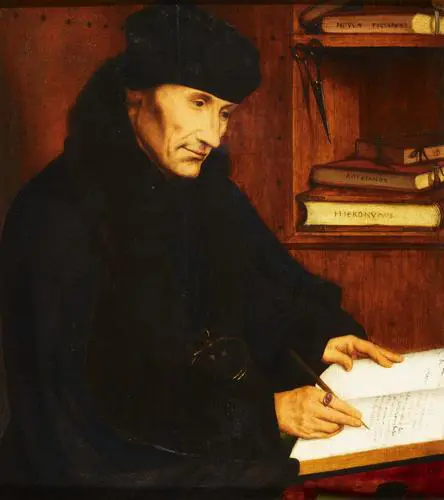Erasmus
Artworks Feature
ABC Radio National 2009

Desiderius Erasmus Roterodamus (1466-1536) was an unlikely celebrity in his own lifetime. Unlikely because he was a humanist and earnest scholar, but in a way his role was equivalent to what today would be called a powerful influencer (with a superior brain). Among his many scholarly projects was a new translation of the Greek text of the New Testament. But an even more influential text was his essay ‘In Praise of Folly’ (1509). This is an amusing satire on the abuses and corruptions of the Catholic church, as well as a sardonic look at human foolishness and frailty. Despite it not being an ‘easy read’ it became a huge bestseller. The edition with pen and ink drawings by Hans Holbein the Younger was particularly popular.
For the 500th anniversary of ‘In Praise of Folly’ the Museum Boijmans Van Beuningen in Rotterdam, put together an exhibition of paintings, drawings and prints that shows how the essay influenced visual artists of the 16th century and encouraged them to depict fools, swindlers and misers. Erasmus himself also played a role in the development of portraiture. He was very keen to have himself painted and drawn by the leading artists of his day: Hans Holbein the younger, Quinten Massys and the greatest of them all, Albrecht Dürer.
